Bush Tucker Plant List – Gaias Organic Gardens
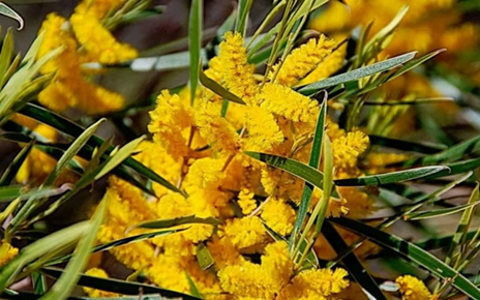
Raspberry Jam Wattle – Acacia Acuminata
- Edible seeds can be grounded into flour and baked into cakes
- Raspberry Jam Wattle flowers heavily in Spring

Sea Parsley – Apium prostratum var. prostratum
- Use it as a garnish or to flavor soups
- We recommend growing it in a tall pot

Midyim Berries – Austromyrtus dulcis
- May be eaten fresh or used in pies and preserves.
- This dense, bushy plant does best in full sun or part shade.
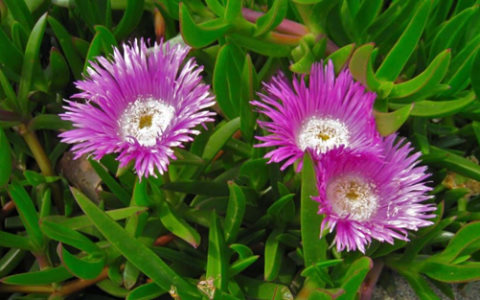
Karkalla – Carpobrotus virescens (Bain)
- The leaves can be eaten raw or cooked like a vegetables
- Can tolerates both drought and salt, and is somewhat frost-resistant.

Finger Lime – Citrus australasica
- Great for summer drinks and desserts.
- Finger Limes thrive in dappled light as well as full sun. In cooler climates, a partly shaded north-facing site is preferred.
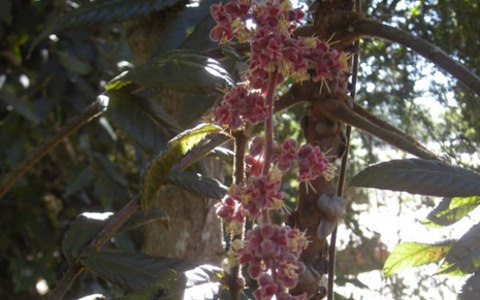
Ooray – Davidsonia pruriens
- Beautifully tart plum-like berries rich in antioxidants and vitamins.
- This is a medium-sized tropical ornamental tree, growing to between 4 and 8 metres.
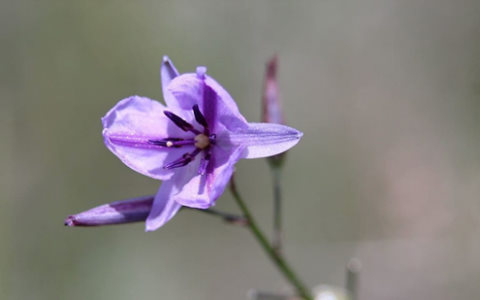
Chocolate Lily – Arthropodium strictum
- Fragrant flowers are also edible, and may be added to salads.
- Grow in full sun or part shade in a garden bed or pot at least 20cm deep allowing room for the tubers to develop

Warrine – Dioscorea hastifolia
- Great ingredient in a variety of savoury and sweet dishes, like stews, pies, curries, and tarts.
- For best results, grow it in a loamy medium and keep mulched.
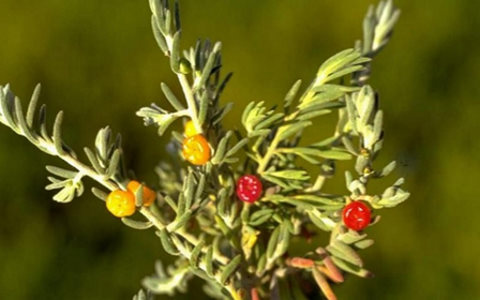
Ruby Saltbush – Enchylaena tomentosa
- Berries may be eaten raw or soaked in water to make a sweet tea
- It prefers full sun but will also grow in dappled shade. Can survive saline soil, sandy soil, long droughts and even some frost.
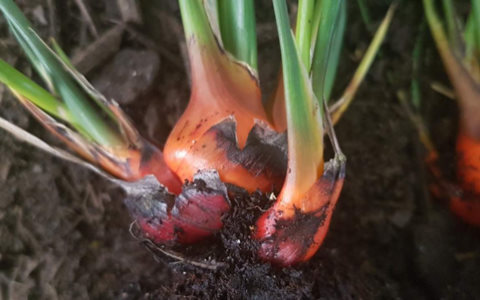
Bloodroot – Haemodorum spicatum
- Best baked or roasted, and may be pounded and dried and used as a spice.
- Bloodroot is summer dormant and slow growing. Takes a while to produce a decent bulb.
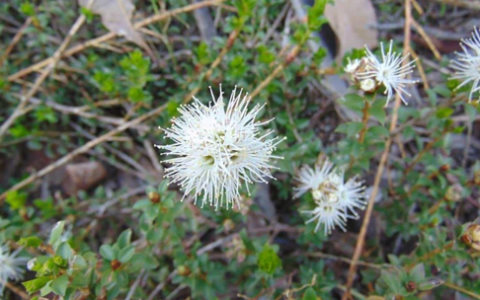
Muntries – Kunzea pomifera
- Perfect for eating raw in salads and cheese platters, or cooked in jams.
- Avoid disturbing the roots and grow your muntrie upright on a low trellis.

Blue Tongue – Melastoma affine
- Berries can be picked and eaten directly off the shrub.
- Grows fast, reaching up to 3m in height. It produces no nectar, but plenty of pollen, and will attract bees.
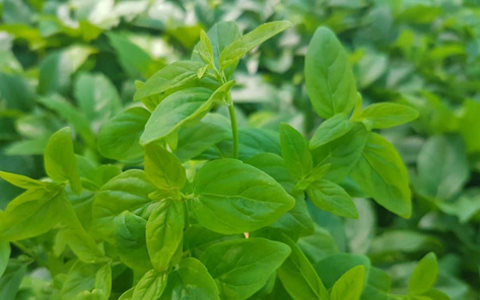
Native River Mint – Mentha australis
- Used for sauces, salads, dressing, dips, roasts, desserts, teas and cocktails
- It grows relatively fast and will need regular pruning to keep tidy.
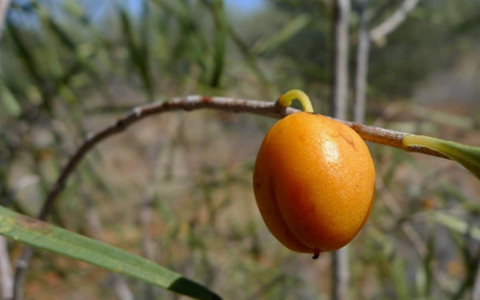
Gumbi Gumbi – Pittosporum angustifolium
- Great as tea, often touted for its health benefits
- For best results in a home garden, choose a well-drained loamy soil or potting mix, located in full sun.
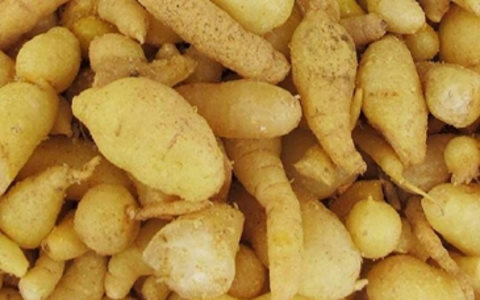
Youlk – Platysace deflexa
- Makes a tasty ingredient for salads, stews, pies, gratin and cakes.
- Grow your Youlk in full sun or part shade, in loamy soil, and water generously during summer.
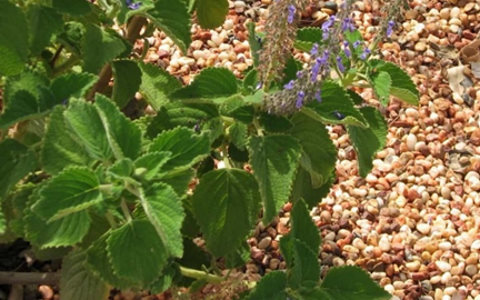
Bush Basil – Plectranthus graveolens
- Scatter fresh leaves on pizza or caprese and salad.
- Though it will tolerate sandy soil and low nutrient levels, a loamy potting mix with plenty of organic matter will yield a better harvest.
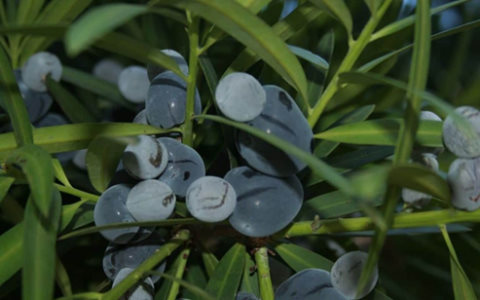
Illawarra Plum – Podocarpus elatus
- A compliment for chilli, garlic, sauces and marinades.
- You’ll need both male and female trees to produce fruit. To increase your chances of pollination, best planting several plants or use as a hedge.
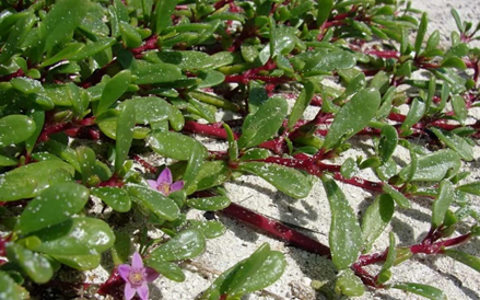
Sea Purslane – Sesuvium portulacastrum
- Great for pickling as this is one salty succulent.
- It’s a low-maintenance plant. A fast grower, we don’t recommend growing it alongside other herbs and veggies
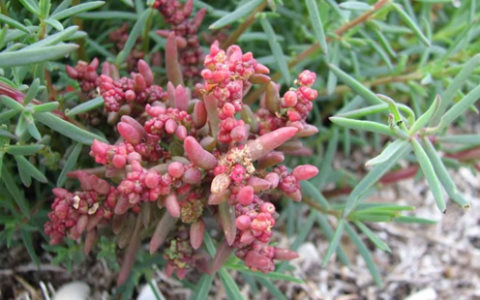
Seablite – Suaeda australis
- As a cooked vegetable, they bear resemblance to young bean shoots in texture.
- Seablite is a fast grower that prefers moist soil. Tolerates a wide range of pH and thrives in saline conditions.
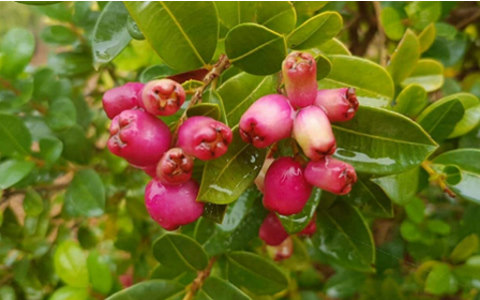
Tucker Bush Cherry – Syzygium austral
- They may be eaten freshly picked from the tree, or made into jams, jellies, muffins, biscuits, and cakes.
- Flowering begins in late-Spring/early-Summer with clusters of white fluffy flowers appearing across the branches.
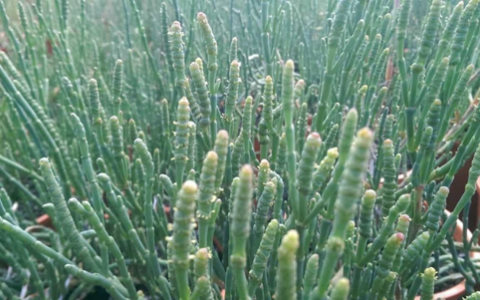
WA Samphire – Tecticornia lepidosperma
- Enjoy these raw, sautéed or quickly blanched and tossed with olive oil and lemon.
- Harvesting the tender new shoots will offer the best flavour without compromising plant growth.
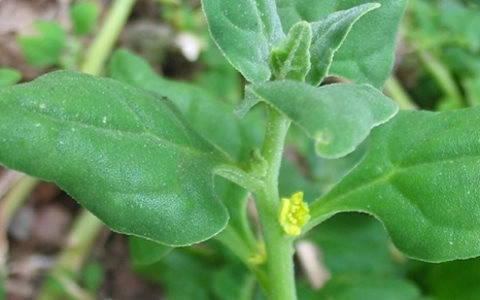
Warrigal Greens – Tetragonia tetragonioides
- You can use Warrigal Greens the way you’d use spinach, chard, silverbeet and bok choy.
- This plant may die back during winter, but may revive itself in the spring.
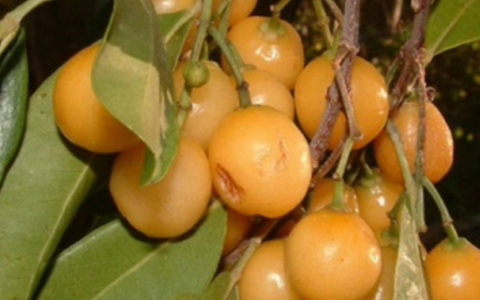
Fraser Island Apple – Acronychia imperforate
- Try turning them into syrups, jams or sauces, or drying them like raisins
- Fraser Island Apple is much loved by birds, so be sure to harvest early and often to avoid disappointment!
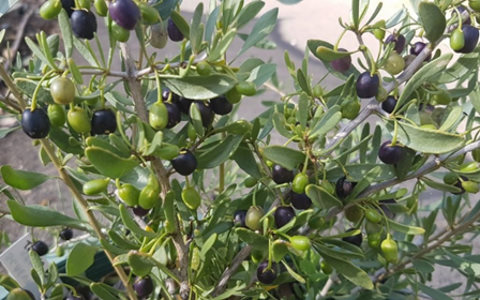
Maroon Bush – Scaevola spinescens
- Consume as tea, the leaves, flowers and berries of this plant can be simmered.
- Maroon Bush is a hardy evergreen similar in appearance to rosemary and preferring similar conditions.
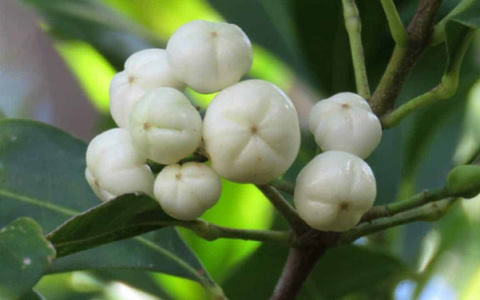
White Aspen – Acronychia oblongifolia
- Enjoy them fresh on their own, or add them to salads and side dishes
- With adequate care and pruning, you can easily grow it as a screen, a hedge or as an edible balcony plant in a large pot.
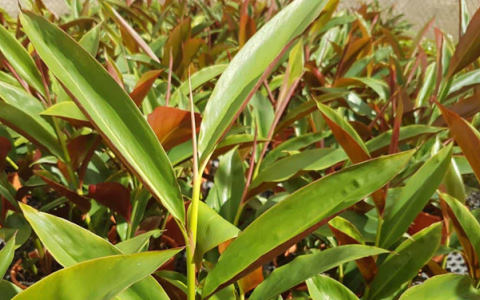
Red Back Australian Ginger – Alpinia caerulea ‘Atherton’
- Both the spicy root and bright blue fruit may be eaten. The ginger-scented rhizome may be used, like other ginger roots.
- Prefers a constantly moist soil. Fertilise in Spring and mulch well before Summer.
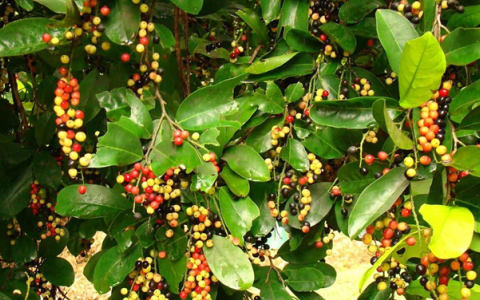
Bignay – Antidesma bunius
- Bignay leaves are tart and may be used to flavour rice, salads, vegetables dishes.
- This medium tree does well in full sun or part shade, and can handle a range of soil types.
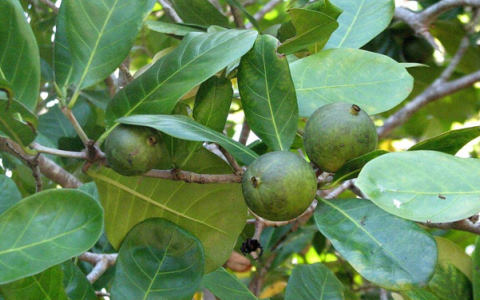
Native Gardenia – Atractocarpus fitzalanii
- May be enjoyed raw on their own or used in salads, tarts, cakes and other desserts.
- Be sure to shelter it from strong winds and the harsh afternoon sun. It prefers warmth and moisture
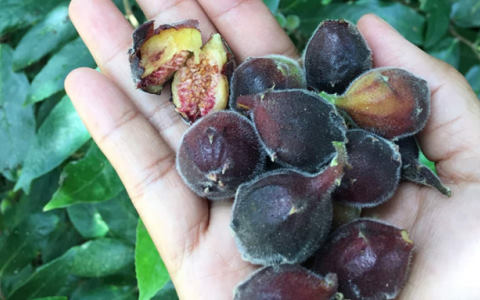
Sandpaper Fig – Ficus coronate
- They can be eaten fresh (after removing the furry skin) or dried, or cooked into cakes, pies, biscuits.
- It tolerates cold climates, poor soils, low light, heavy pruning and some neglect, however it is somewhat frost sensitive.

Small-leaved Tamarind – Diploglottis campbellii
- Recipe favourites include jams, jellies, sauces, fruit chutneys, spreads and coulis.
- This plant is a prolific fruiter, capable of bearing many kilos in a harvest.

Boobialla – Prostanthera rotundifolia
- Aromatic, juniper-like qualities makes Boobialla an exciting local botanical for essential oils and gin.
- We’d caution against foraging for these fruits, as unlicensed picking of native plants is unsustainable and illegal
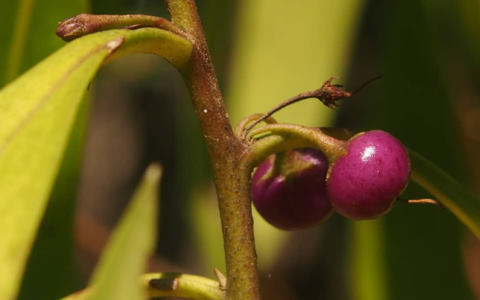
Waterbush – Myoporum montanum
- Like tomatoes, apples and rhubarb, some parts make great tucker while other parts may be harmful in large quantities or if prepared incorrectly.
- Waterbush is a hardy, woody plant that’s adaptable to most soils and growing conditions.
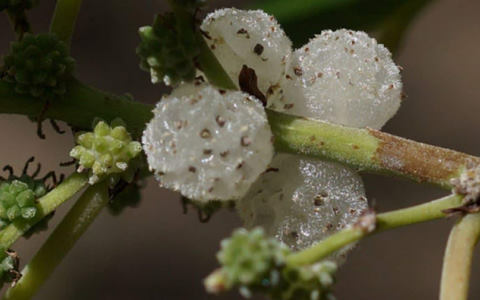
Native Mulberry – Pipturus argenteus
- They are soft and juicy, with a sweet and delicate flavor
- Native Mulberry trees are dioecious, meaning they may be male or female. They prefer warm climates, full sun and soils with good drainage.

Native Oregano – Myoporum insulare ‘Prostrate’
- A strongly aromatic herb, Native Oregano is a superior native substitute for common oregano.
- Though Native Oregano will tolerate light frosts and full sun, it prefers temperate, partly shaded conditions.
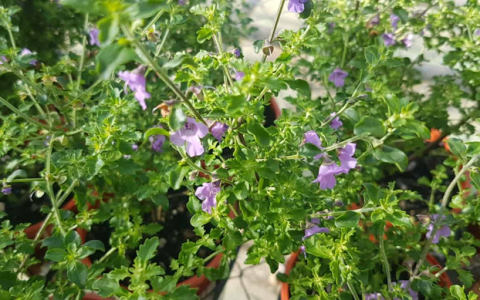
Native Thyme – Prostanthera incisa
- Native Thyme boasts a more complex flavour than Mentha mints. With hints of pepper and earthy tones.
- Prefers warmth and moisture. Grow in full sun or part-shade, and water generously in Summer.
Notes: The plants are seasonal and availability changes monthly
Acknowledgment:
We would like to thank Tucker Bush tuckerbush.com.au for their assistance with this resource.
